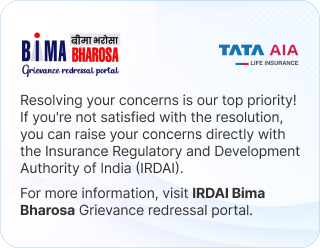Person of Indian Origin (PIO) and Overseas Citizen of India (OCI) are two distinct legal terms used for foreign citizens of Indian origin. While both involve certain benefits and rights, they differ from each other in many aspects.
Many of you might be familiar with the term NRI. But how many of you have heard of PIO and OCI? While NRIs are Indian citizens who stay abroad, PIOs and OCIs are individuals who are citizens of another country but are of Indian origin.
Since the constitution of India does not permit dual citizenship, the idea behind PIO and OCI is to foster ties with people of Indian origin and grant them certain rights and privileges on par with Indian citizens.
Now that you know the basic difference between NRI, PIO and OCI, let us dive deeper into the PIO and OCI differences.
Persons of Indian Origin (PIO)
PIO refers to a foreign citizen (except a citizen of Pakistan, Bangladesh, China, Afghanistan, Iran, Sri Lanka, Bhutan and Nepal) who previously held an Indian passport or whose ancestors were Indian citizens.
Spouses of Indian citizens and people who could establish a significant connection with India through origin, marriage, etc. are also added to the eligibility criteria.
Benefits of PIO Status
PIO status offers a range of benefits, rights and privileges that are as follows:
- PIO card holders can visit India without a visa for 15 years from the date of issuance of the card.
- PIO card holders are exempted from registering with the Foreign Regional Registration Offices (FRROs) or Foreigners Registration Office (FRO) if they intend to stay in India for 180 days.
However, if the stay is more than 180 days, PIO cardholders must register with the nearby FRRO/FRO within 30 days.
- PIO card holders have access to Indian educational institutes and healthcare facilities on par with NRIs.
- PIO card holders can reside and work in India without an employment visa. There are no employment restrictions except for sectors that require protected and restricted area permits.
- PIO card holders can own immovable properties, make investments and participate in business ventures in India.
- PIO cardholders can obtain a Permanent Account Number (PAN) card, driver’s license, open bank accounts, and access loans like Indian citizens.
Documents Required for PIO Card
Here is a list of PIO documents needed for the PIO card application:
- Original passport (existing/expired)
- At least two from the list of the following documents:
- photocopy of an expired Indian passport
- The applicant’s and parents/grandparents' birth certificate
- The applicant’s and parents/grandparents' nationality certificate
- Applicant’s or parents/grandparents’ school/college leaving certificates
- Photocopy or original copy of the Indian passport of the applicant’s parents/grandparents
- In the case of the spouse of a PIO, the following documents are needed:
- Indian passport or PIO card of the spouse
- Original marriage certificate
- Four passport-size photographs
Overseas Citizen of India (OCI)
OCI refers to a foreign national who was an Indian citizen or eligible to become an Indian citizen on or after 26th January 1950 or belonged to a region that became part of India after 15th August 1947.
Children and grandchildren of such an individual also enjoy eligibility for OCI status. However, an applicant who has ever been a Pakistani or Bangladeshi citizen cannot apply for an OCI card.
Benefits of OCI Status
- OCI cardholders are not required to register with the FRRO/FRO irrespective of their stay duration.
- OCI cardholders can obtain a PAN card or driver’s license, open a bank account, and access loans like Indian citizens.
- OCI cardholders do not require an employment visa to work and reside in India. They are not restricted to work in any sector except those requiring special protected and restricted area permits.
- OCI card holders have access to Indian educational institutes and healthcare facilities on par with NRIs.
- OCI cardholders can own immovable properties, make investments and participate in business ventures in India.
Documents Required for OCI card
To apply for an OCI card, you need to furnish the following documents:
- Indian passport if you had one. If not, then you have to provide other documents like a nativity certificate for verification and authentication purposes.
- Birth certificate
- Passport or local residence proof to establish the citizenship of another country.
- Four passport-size photographs
- Proof of relationship if you are applying based on your Indian parents' citizenship.
- Attach all the duplicate copies of the mentioned documents with the application.
Difference Between PIO and OCI
The table below sums up the difference between PIO and OCI:
Point of difference |
PIO |
OCI |
Who is eligible to apply? |
● Individuals who previously held an Indian passport ● Individuals whose parents, grandparents or great-grandparents were born and stayed in India as stated in the Government of India Act, 1935 ● Spouses of Indian citizens or PIOs ● Children whose parents are Indian citizens |
● Individuals who were Indian citizens or eligible to become Indian citizens on or after 26th January 1950 ● Individuals belonging to a region that became part of India after 15th August 1947 ● Children and grandchildren of such individuals ● Minor children whose both parents are Indian citizens or either of the parents is an Indian citizen |
Visa requirement |
Not required |
Not required |
Validity of visa |
Visa is valid for 15 years after the date of issuance |
Once issued, the visa has lifelong validity |
Registration with FRRO |
PIO cardholders can stay in India for up to 180 days without registering with the FRRO/FRO. If the stay exceeds 180 days, they need to register at the nearest FRRO/FRO within 30 days |
OCI cardholders are not required to register with the FRRO/FRO for any stay duration |
Benefits |
● PIO cardholders do not require a visa for up to 15 years from the date of issue of the card ● They can study and work without a special visa ● They enjoy parity with NRIs regarding financial and economic rights except in acquiring agricultural or plantation properties
|
● OCI cardholders can visit India anytime during their lifetime for any purpose ● They can study and work without a special visa ● They enjoy parity with NRIs regarding financial and economic rights except in acquiring agricultural or plantation properties |
Indian citizenship |
As per the Citizenship Act, PIO cardholders must stay in India for at least 7 years before making an application for registration |
Individuals registered as OCI cardholders for 5 years and residing in India for twelve months before application for registration can become Indian citizens |
Limitations to PIO and OCI Statuses
While OCI PIO card bestow multiple rights and privileges on their holders, they come with the following restrictions:
- PIO and OCI cardholders cannot own agricultural or plantation property.
- They do not enjoy employment rights in Government of India undertakings.
- They do not have the privilege of holding constitutional offices in the Government of India.
- PIO and OCI cardholders do not have the right to vote or to be elected to Lok Sabha, Rajya Sabha, Legislative Assemblies/Councils, constitutional posts like the President, Vice President, Supreme Court judge, etc.
- Both require special permits to carry out missionary or research work, enter protected and restricted areas or mountaineering.
Wrapping Up
So, this was all about the difference between PIO and OCI cards. As per the Citizenship Amendment Bill, 2015, PIO cardholders are deemed OCI cardholders from September 2019. The merger of both cards by the government of India aims to streamline residency norms. Hence, as a foreign citizen of Indian origin, you will now have to apply for the OCI card only for seamless travel to India.
As far as the difference between NRI and OCI is concerned, nn NRI is an ordinary Indian citizen living abroad who possesses an Indian passport. On the other hand, an OCI is a citizen of another country who was an Indian citizen or eligible to become an Indian citizen on or after 26th January 1950 or belonged to a region that became part of India after 15th August 1947.










 FOR EXISTING POLICY
FOR EXISTING POLICY 
 FOR NEW POLICY
FOR NEW POLICY 








